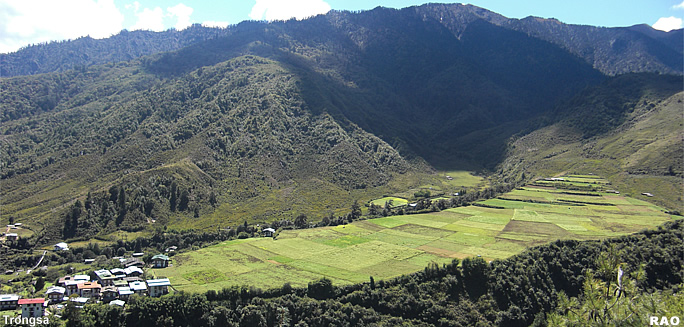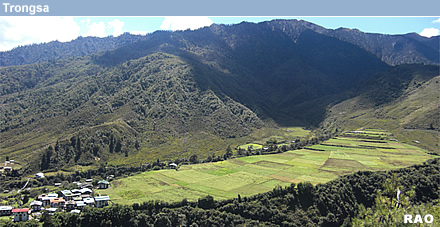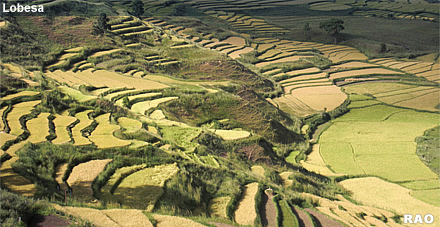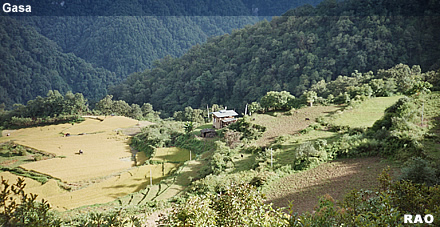| Bhutan's Economy: Agriculture |
 |
Bhutan Agriculture |
|
 |
Bhutan Information |
|
|
 |
| Agriculture |
|
| Mongar: Kengkhar's acute water shortage |
 |
It is difficult being a student in Kengkhar.
 |
|
There is not much time for studies, apart from the regular classes, as students of the lower secondary school have to fetch water for two hours everyday, with Kengkhar (Mongar Dzongkhag) hit by an acute water shortage.
Dorji Wangchuk, a class four student, gets up everyday at 5 am. "It's not for morning studies, we have to get water to wash our face and with the leftover, wash our plates and mugs, limbs and socks," said Dorji.
|
|
Junior students in classes PP and one are spared from the daily chore.
The few taps in the school campus are dry as the pine leaves. Teachers said they constantly fear that students might become ill. "We can't even tell them to stay clean because there's no water," said principal Sangay Dorji.
The school has a water supply, which it shares with about 400 households in the gewog and other government institutions, drawn from two sources more than 26 km away in 2005. After several months, the water in their taps dropped down to trickles.
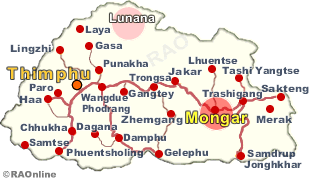 |
|
"The problem's not so much with the water source. Since it's brought from a long distance, there are some places where it gets damaged," said Kengkhar gup Karma Dorji.
A risum (water supply caretaker) has been deployed to take care, but he said the supply needs major maintenance. "We're not entitled for budget to repair the pipelines as it was given only recently."
|
|
|
Opening the door to her ground floor, she showed how the harvest was affected. "Nine years ago, all these containers used to be filled with paddy rice," she said, pointing to four huge empty wooden boxes. "We use to store 1,200 drey (one drey is about 1.5 kg) of rice in each of these boxes," she said. "Today I store rice in tins and there is little in them."
|
|
On a ridge is Chiphu village. Villagers have to walk more than 30 minutes to fetch water. "We also feed water to our cattle on alternative days," said a farmer, Yonten. 17 other households in his village do the same. There are six villages in Kengkhar, which share the same problem.
The condition is no better in the other gewogs of Jurmi and Gongdu. According to the gup, the main problem in these gewogs was because the villages are located on top of hills while the water sources are located below. "There's hardly anything anyone can do," said Jurmi gup Rinchen Gyalpo. He added that a few villages were provided with rainwater harvesting.
In his own village, Tulukpi, though there is a water supply line, which was repaired twice since 2007, people still draw water from the nearby stream, as the water from the taps is not enough. More than five villages face water shortages in his gewog.
Villagers said that the water scarcity affected their fieldwork as they had to spend time fetching drinking water.
|
|
"During the peak farming season, we have to engage a person to draw water which hampers his contribution to farming," said Dendup, 54, from Munma village.
| This
article was contributed by Tshering Palden, KUENSEL, Bhutan's National
Newspaper, 2010 |
 |
top
|
Farming
in Bhutan
|

|
top
| Information on Bhutan |
 |
|





